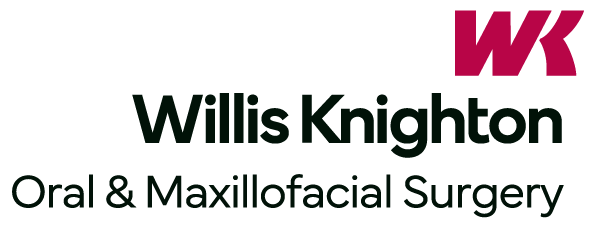Orthognathic Surgery
What is Orthognathic Surgery?
Orthognathic surgery, or jaw surgery, is needed when jaws don’t meet correctly and/or teeth don’t seem to fit with the jaws. Proper treatment requires constant communication between the orthodontist and Oral & Maxillofacial Surgeon. The teeth are first straightened with orthodontics, and corrective jaw surgery follows to reposition the misaligned jaw(s). This not only improves facial appearance, but also ensures that teeth meet correctly and function properly.
Who Needs Orthognathic Surgery?
People who can benefit from orthognathic surgery include those with an improper bite or jaws that are positioned incorrectly. Jaw growth is a gradual process and in some instances, the upper and lower jaws may grow at different rates. The result can be a host of problems that can affect chewing function, speech, and/or long-term oral health and appearance. Injury to the jaw(s) and birth defects can also affect jaw alignment. Orthodontics alone can correct bite problems when only the teeth are involved. Orthognathic surgery may be required when jaw repositioning is necessary. Corrective jaw surgery can be used to improve certain temporomandibular joint disorders.
What Are Some Signs That I Might Need Orthognathic Surgery?
Difficulty in chewing, biting or swallowing, speech problems, chronic jaw or TMJ pain, open bite, protruding jaw, and/or breathing problems should be evaluated by both the orthodontist and Oral & Maxillofacial Surgeon. Any of these symptoms can exist at birth, be acquired after birth as a result of hereditary or environmental influences, or as a result of trauma to the face.
How is Orthognathic Surgery Performed?
Before any treatment begins, a consultation will be held to perform a complete examination with x-rays, photographs, and models of your teeth. At the WK Oral and Maxillofacial Surgery Institute, we use modern techniques and three-dimensional models to show you exactly how your surgery will be approached. Once you are deemed ready for surgery by your orthodontist, measurements are made to make sure that everything will be optimized after surgery. All incisions are performed from inside the mouth, and plates and screws are used to secure the bone(s) into their new anatomic positions. Rarely, it may be necessary to wire your jaws together for a period of 4-6 weeks.
What Can I Expect After Surgery?
Generally, you will often spend one night in the hospital after surgery. You will feel some degree of numbness/tingling to your cheeks/nose/upper lip/upper teeth for anywhere up to 4 months after surgery. The bulk of the swelling generally resolves over the first 1-2 weeks, with minimal residual swelling often taking up to 2-3 months to fully resolve. You will be discharged home with pain medication, antibiotics, prescription antimicrobial mouth-rinse, and various sinus medications. It is important to not attempt to forcefully blow your nose or drink through a straw for a period of 2-4 weeks after surgery. Eating might be uncomfortable for the first few weeks, and we will recommend a strict diet regimen for the first few weeks, advancing slowly during each follow up visit. You may require a few weeks of rubber bands to help guide you into biting into your new bite. You may also have a surgical splint attached to your braces in your upper jaw to help with your new bite. This is generally removed after 4-6 weeks.
Our goal is to help you understand the benefits of orthognathic surgery. If you are a candidate for corrective jaw surgery, the surgeons at the WK Oral and Maxillofacial Surgery Institute will work closely with your dentist and orthodontist during your treatment, ensuring that we can move your teeth and jaws into a new position that results in a more attractive, functional, and healthy dental-facial relationship.
Copyright © 2025 Willis Knighton Oral & Maxillofacial Surgery Specialists. All rights reserved.


